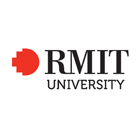Master of Engineering (Electrical and Electronic Engineering)
- Home
- Courses
- RMIT University (Royal Melbourne Institute of Technology University)
- Master of Engineering (Electrical and Electronic Engineering)
Master of Engineering (Electrical and Electronic Engineering)
Work as an electrical or electronic engineer Exciting developments in this field offer excellent career opportunities. This includes advancements in energy generation, distribution, automation and control as well as electronic instrumentation, devices, sensors and communication technologies. What you will study In this flexible degree you’ll develop expertise in the analysis,…
Categories
COURSE DESCRIPTION
Work as an electrical or electronic engineer
Exciting developments in this field offer excellent career opportunities. This includes advancements in energy generation, distribution, automation and control as well as electronic instrumentation, devices, sensors and communication technologies.
What you will study
In this flexible degree you’ll develop expertise in the analysis, design, implementation, and operation of electrical and electronic devices, systems, and services.
RMIT University is ranked among the world’s top 100 universities in electrical and electronic engineering (2019 QS World University Rankings by Subject).
This degree will equip you to work at the cutting-edge of developments in:
electrical energy generation and distribution
automation
control
instrumentation
computing technologies
electronic circuit design and fabrication
microsystem and information technology
communication and network engineering
You will also enhance your professional skills in research, problem-solving, communication, teamwork and leadership.
Graduates can find work in a range of industries including electrical engineering, electronic engineering, power generation and distribution, aerospace, automotive, computer, telecommunications, manufacturing, resources and defence.
Additional campus information
All lectures take place at the Melbourne City campus. Some elective courses require the lab classes to be run at specialised facilities at the Bundoora campus.
Career
Exciting developments in this field offer excellent career opportunities. These developments include advancements in energy generation, distribution, automation and control, as well as electronic instrumentation, devices, sensors and telecommunications technologies.
Career outlook
In the private sector, graduates work in the design, manufacture, and supply of engineering devices, systems, and services. They work as technical experts, technical or business managers, or executive officers. You could start up your own business in local and global markets or undertake higher studies by research.
In the public sector, graduates develop essential services for the community in areas such as telecommunications, networks, energy, transportation, security, defence, health, education, emergency services and environmental protection.
EDUCATIONAL INSTITUTION
Since its establishment in 1887, Royal Melbourne Institute of Technology University (RMIT) has been meeting the needs of the community surrounding it. Originally a Working Men’s College, RMIT showed its flexibility during World War Two, training over 20,000 servicemen in communications to help with the war effort.Now, it is a true pioneer in international education, championing cross-border study opportunities with campuses in various countries. Granted formal university status in 1992, RMIT is ranked 21st in the world for universities that are less than 50 years old.RMIT is the largest higher education institution in Australia, currently with more than 82,000 students. With nearly 20% of those students coming from overseas, it is a university that truly welcomes diversity and is a melting pot of different cultures. RMIT has three campuses in Vietnam, a European hub in Barcelona, an office in Indonesia, and partners with 200+ institutions in 42 countries to provide study opportunities worldwide.
Do you want to Apply to:
Master of Engineering (Electrical and Electronic Engineering)
Add Your Heading Text Here
Please, login or Register to Apply!
Do you need extra info about:
Master of Engineering (Electrical and Electronic Engineering)?
Since its establishment in 1887, Royal Melbourne Institute of Technology University (RMIT) has been meeting the needs of the community surrounding it. Originally a Working Men’s College, RMIT showed its flexibility during World War Two, training over 20,000 servicemen in communications to help with the war effort.
Now, it is a true pioneer in international education, championing cross-border study opportunities with campuses in various countries. Granted formal university status in 1992, RMIT is ranked 21st in the world for universities that are less than 50 years old.
RMIT is the largest higher education institution in Australia, currently with more than 82,000 students. With nearly 20% of those students coming from overseas, it is a university that truly welcomes diversity and is a melting pot of different cultures. RMIT has three campuses in Vietnam, a European hub in Barcelona, an office in Indonesia, and partners with 200+ institutions in 42 countries to provide study opportunities worldwide.




